Dubai Airport is the largest airport of the Middle East and the biggest
transport node in the world. Today you'll know about deserted past,
unbelievable present and fantastic future plans of the airport bearing
in mind that only 50 years ago there was a desert here.

May 1963 was marked by construction of an asphalted landing area, 2804 m
long, that was put into operation in May 1965 alongside with the second
building of the passenger terminal, airplane sheds and navigation
equipment. Its launching ceremony occurred on May 15, 1965 when first
large jet liners De Havilland Comet belonging to Middle East Airlines
and Kuwait Airways arrived at the airport. Lighting system of the
landing area was launched in August 1965. Invention of wide-bodied
reactive jets in 1970 required additional construction of the airport
complex. That time a new three-stored building of passenger terminal
(110 meters long and 13400 square meters in area), bearing tracks
adjusted for wide-bodied jet airplanes and a new air traffic control
tower.
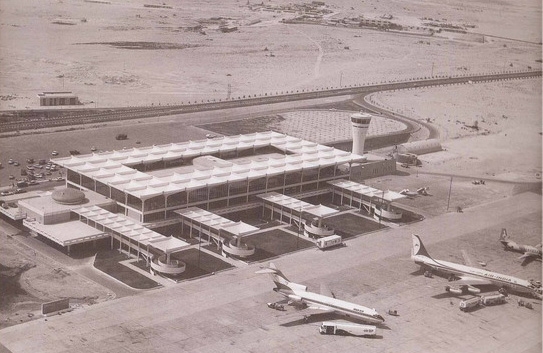
In 1980 the airport was widely used by Air India, Cathay Pacific,
Singapore
Airlines and other companies as a transit airport used for
fueling while flying from Asia to Europe.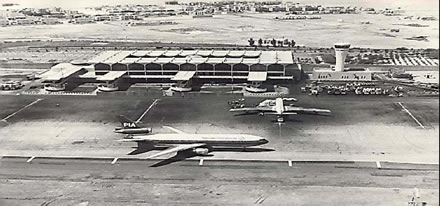
With introduction of long haul liners Airbus A340, Boeing 747-400 and
Boeing 777 there was no need in an intermediate stop any longer.
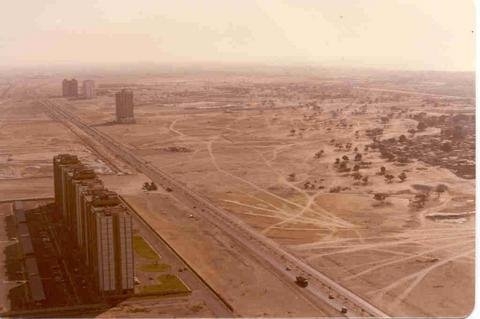
Central office street of Dubai 15-20 years ago. Construction of the
airport was launched by the British company Costain Group in 1959
following the instruction of Sheikh Rashid. Officially the airport was
put into operation in 1960 and had a small passenger terminal, three
flying lines and a landing area that was 1800 meters long. By 1969 the
airport worked with 9 aviation companies in over than 20 directions.
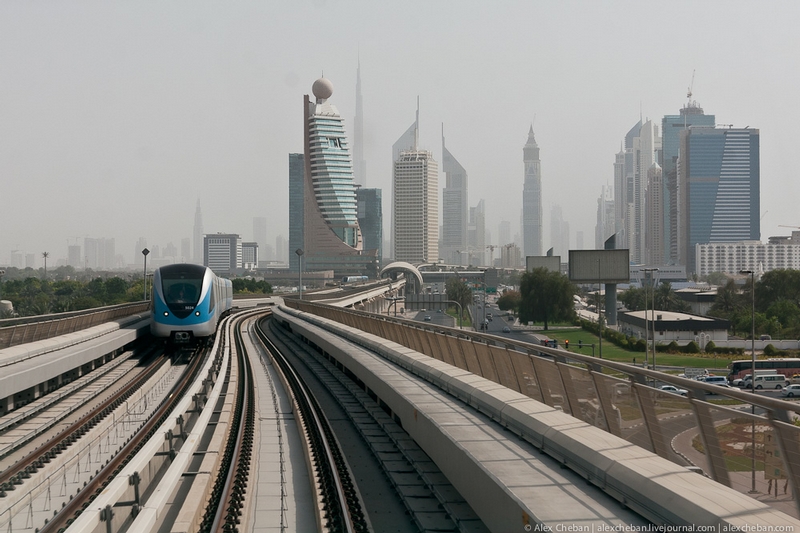
That is what the central street looks like today.
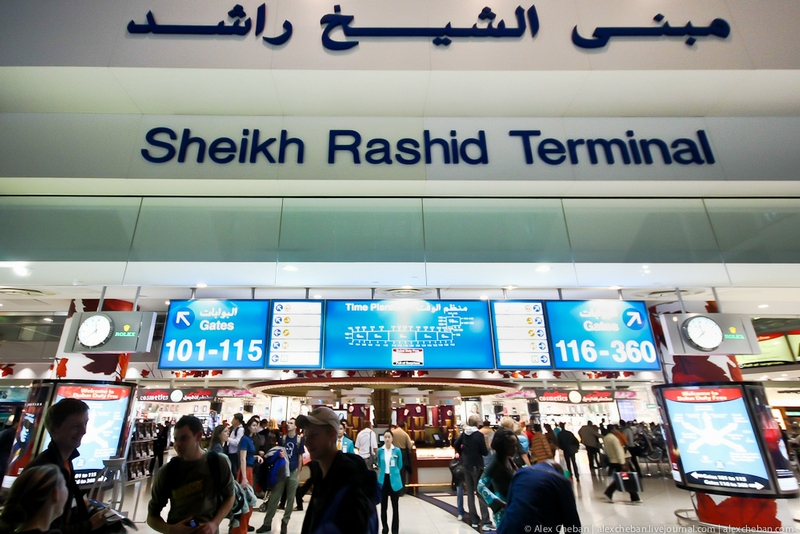
Sheikh Rashid Terminal 1. Meanwhile Dubai was changing fast becoming the center of the Middle East.
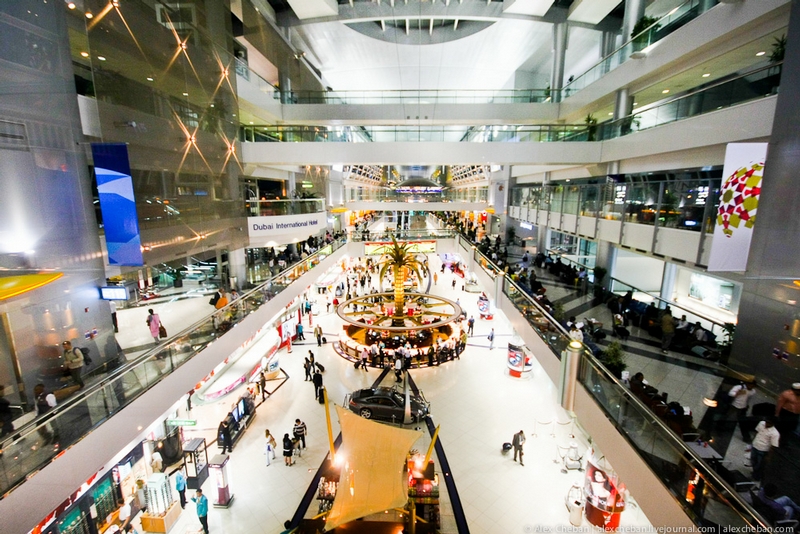
Second plan on the volume of investment was estimated at 4,5 billion US
dollars and included construction of a new passenger terminal. The
works started in 2002. Two buildings were ready by 2008 increasing the
maximum capacity of an airport from 33 to 60 million passengers a year.
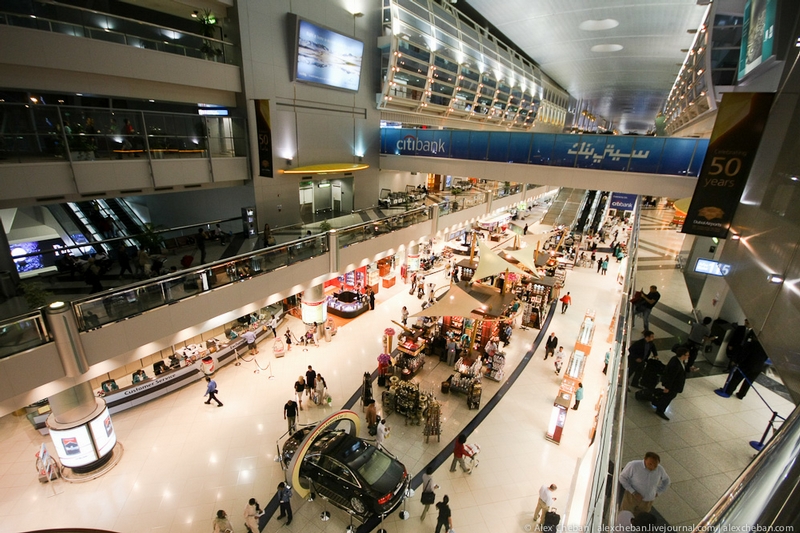
Today maximum capacity of Dubai Airport accounts for 60 billion
passengers and 2,1 million tons a year. Expenses on construction of the
airport constituted 5,5 billion dollars. Initially the maximum capacity
of the terminal accounted for 21 million passengers a year. However,
with increase of total airport load the territory was later expanded
with increase of maximum capacity by 30 million passengers a year. The
terminal provides service to 125 aviation companies and has 221
registration desks, 40 passport control booths and 14 reclaim units.

The program of airport development was completed by 2001. After that
the complex included three terminals with three passenger sectors, two
large cargo terminals, exhibition centers with three large halls,
aviation equipment operation and maintenance center and other rooms.
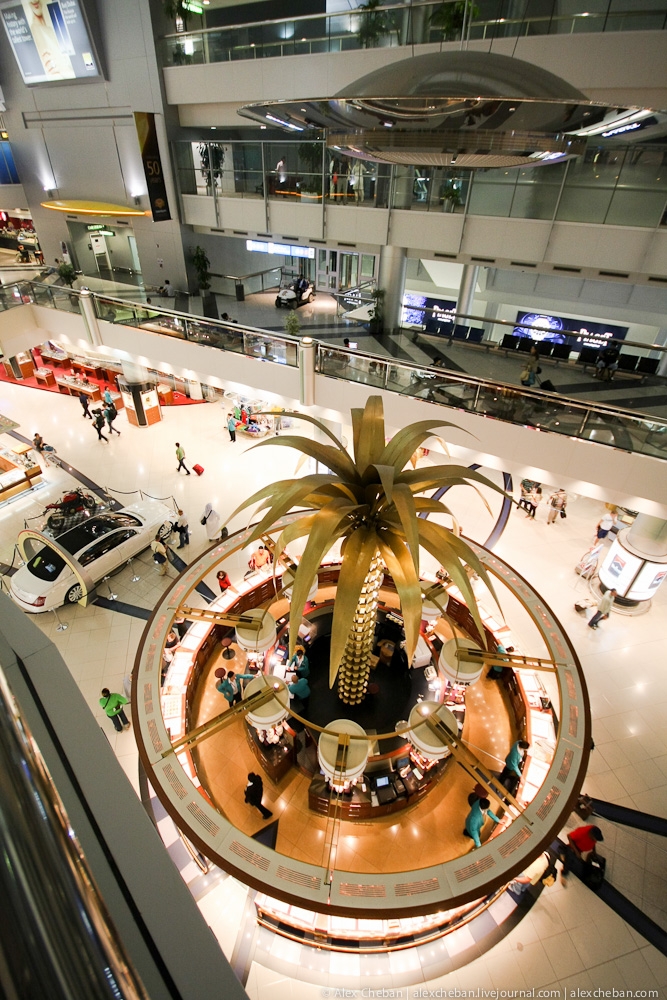
Today Dubai Airport has 6000 daily flights, 130 air companies, over 220
directions to any continent, 47 million passengers in 2010 and 2
parallel landing areas of 4000 meters in length and 60 meters in width
each.

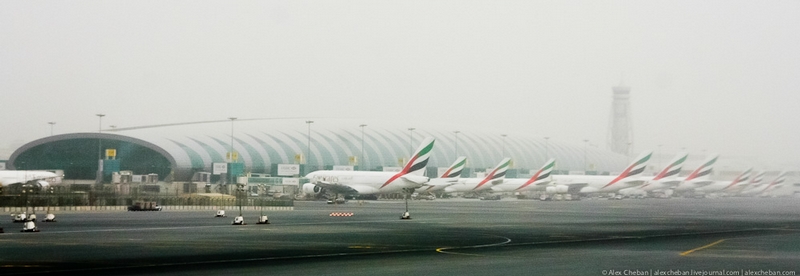
The terminal embraces a 5 and 4 star hotel and fitness centers. External view of the airport.
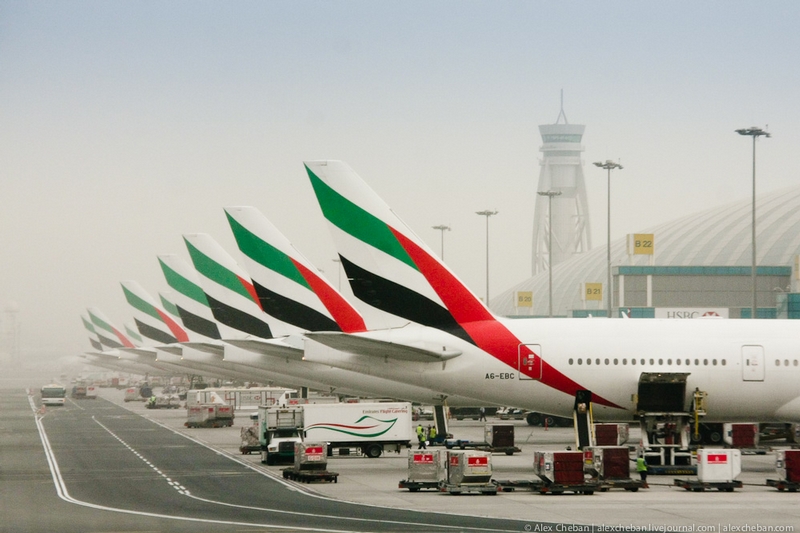
The terminal may seem too flossy due to abundance of golden brilliance and golden palms.
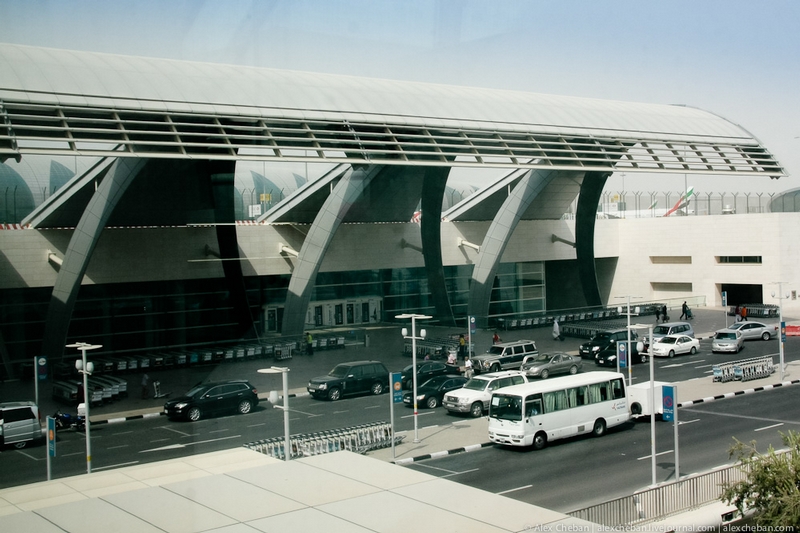
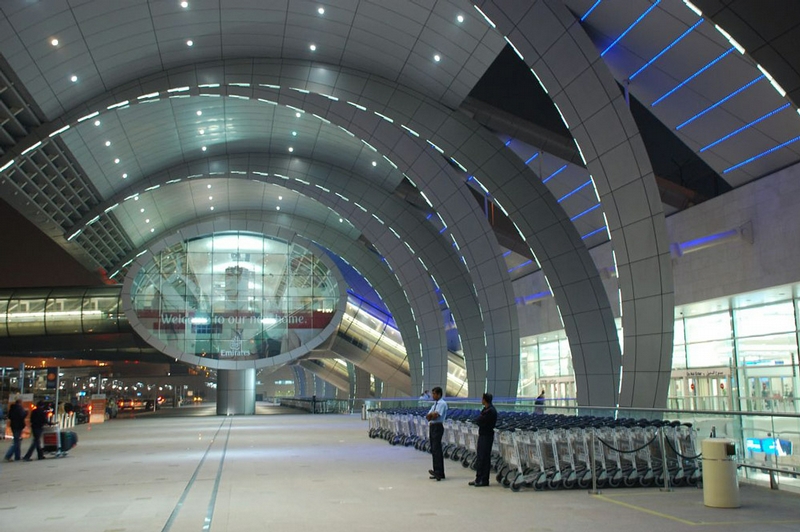
Terminal 2 was put into operation in 1998. It deals with flights of small aviation companies that belong to the countries located nearby. Today the terminal works to its full capacity and is the principal base for the budgetary aviation company Flydubai.
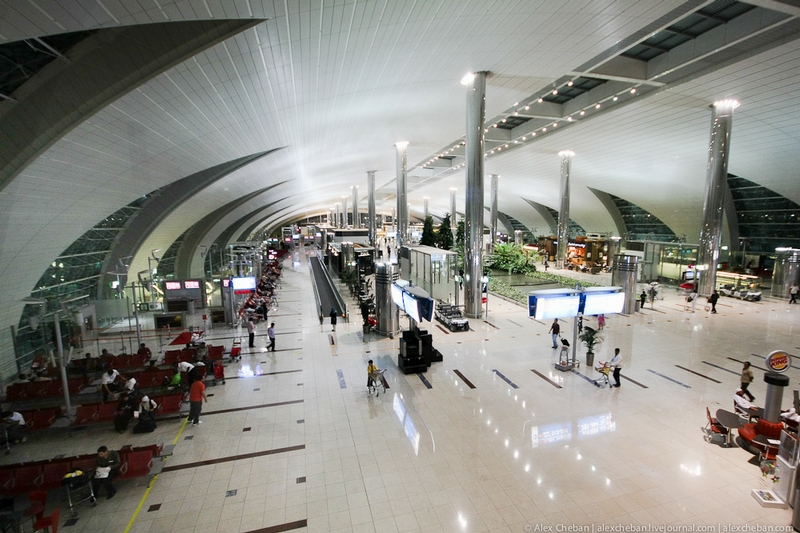
Inside the terminal looks more modern and stylish than terminal 1.

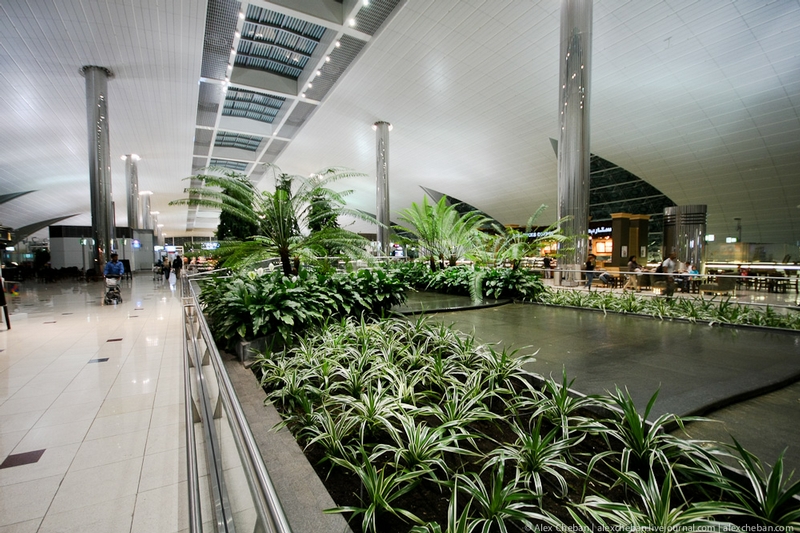
Terminal 3 was opened in 2003 and has two concourses 2 and 3.
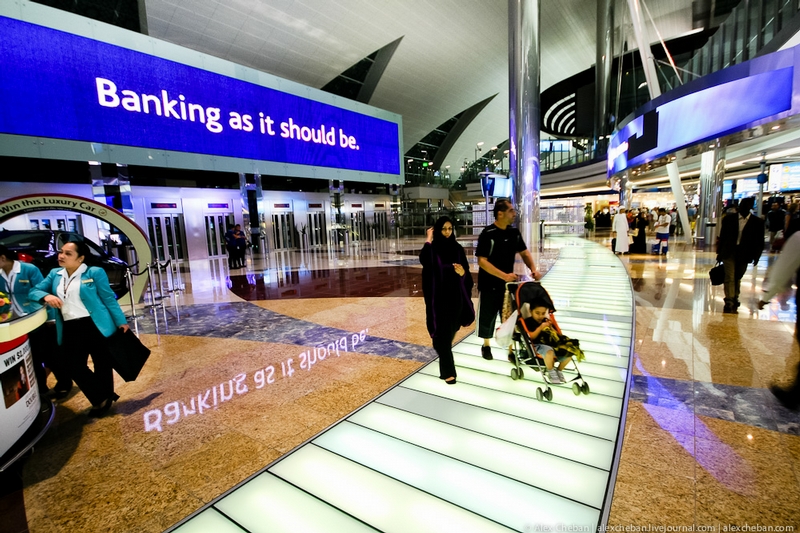
Concourse 2. Its building is directly connected with Terminal 1 with
the help of 950-meter transference system and is used for providing
passengers of Emirates Airline with service. Arrival and departure areas
are located at separate levels and include 32 jetways numbered 201-232
five of which are certified to accept Airbus A380. Today Y Emirates have
15 such planes while other 75 have been ordered.
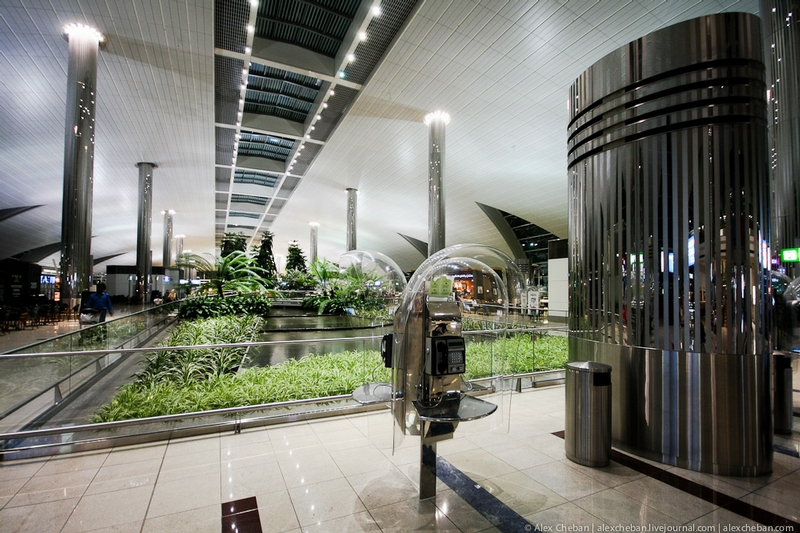
The terminal embraces a 5 and 4 star hotel and fitness centers.

Fitness centers are in the middle part of Terminal 1 and 3 and related
to the hotel. Anyone can enjoy their services. Spending 1 hour in a
swimming pool will cost you 12$.

It is planned to launch Concourse 3 at the end of 2011. Its maximum capacity will be estimated at 15 million passengers a year.
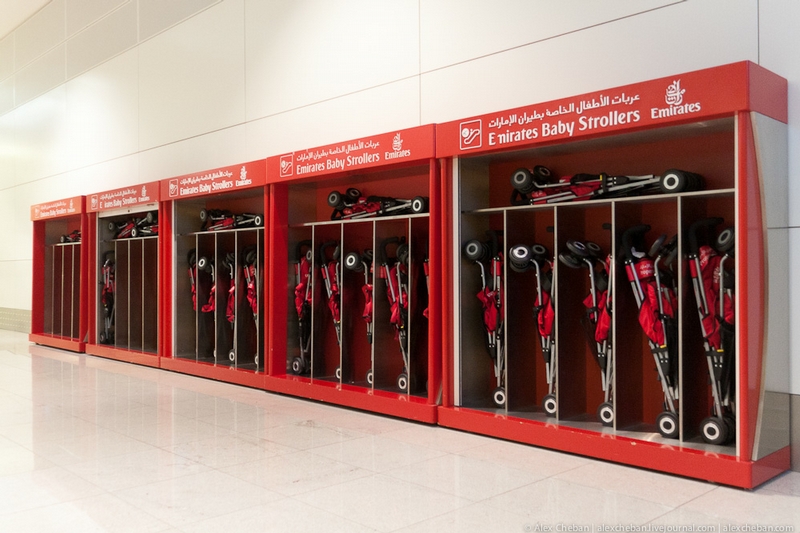
Free baby carriages for passengers with kids.
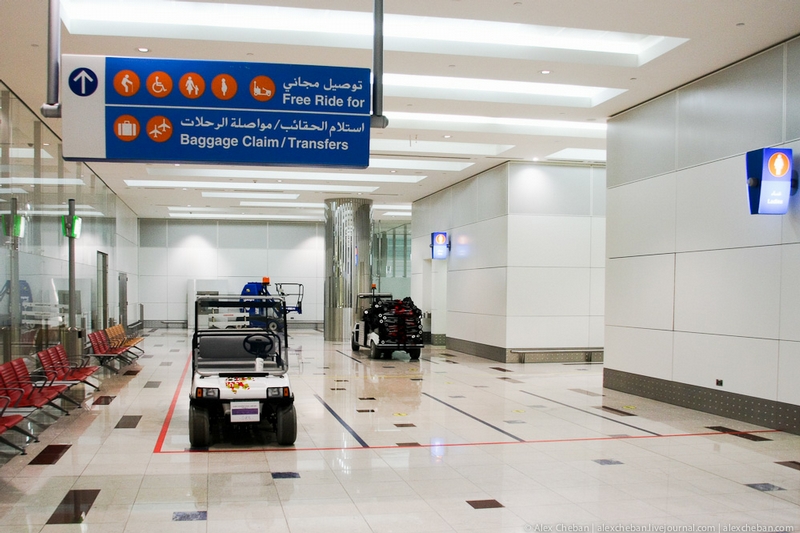
Electric vehicles are used to travel alongside the terminals.
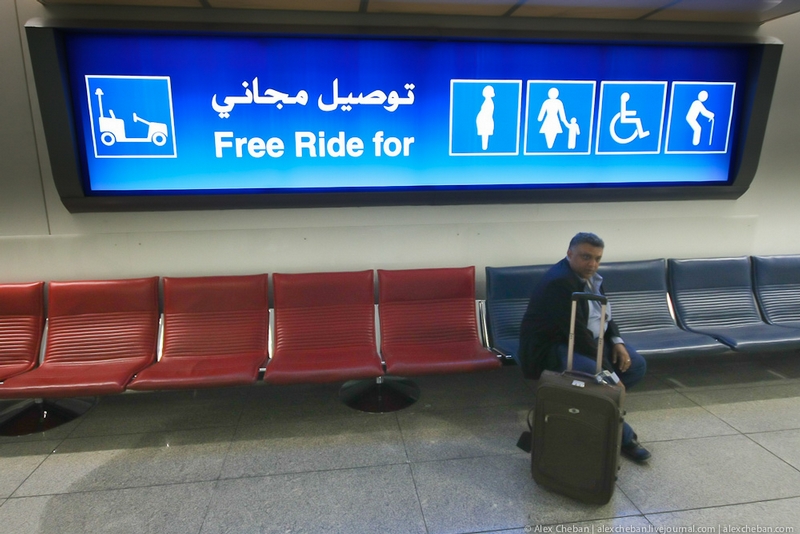
Construction of Terminal 4 with maximum capacity of 75-80 passengers a year will be over by 2013.
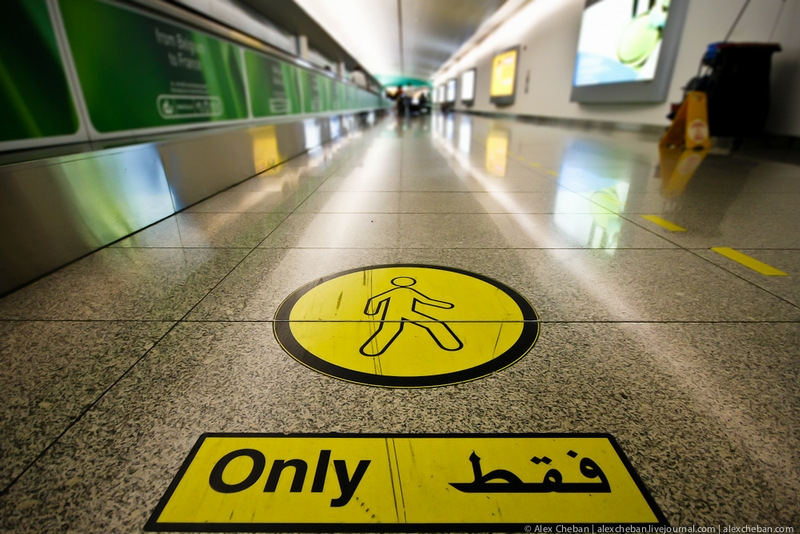
Walkway strip.
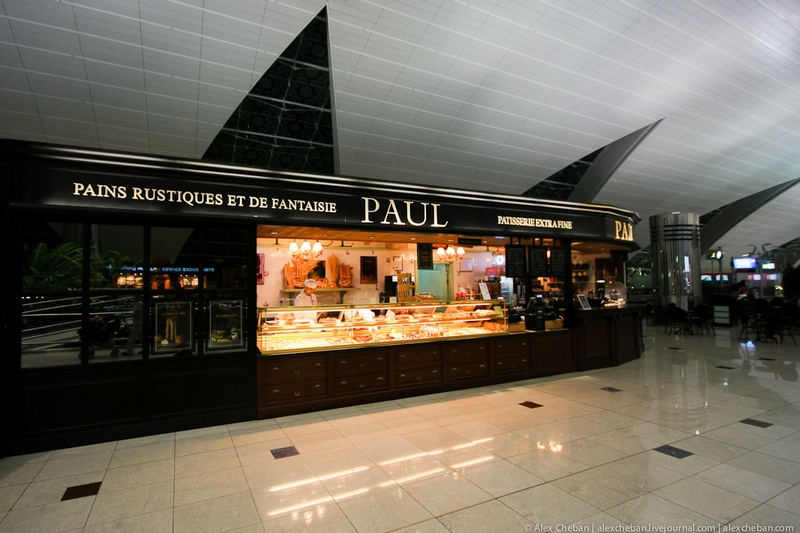
Almost every cafe and restaurant is of European style.
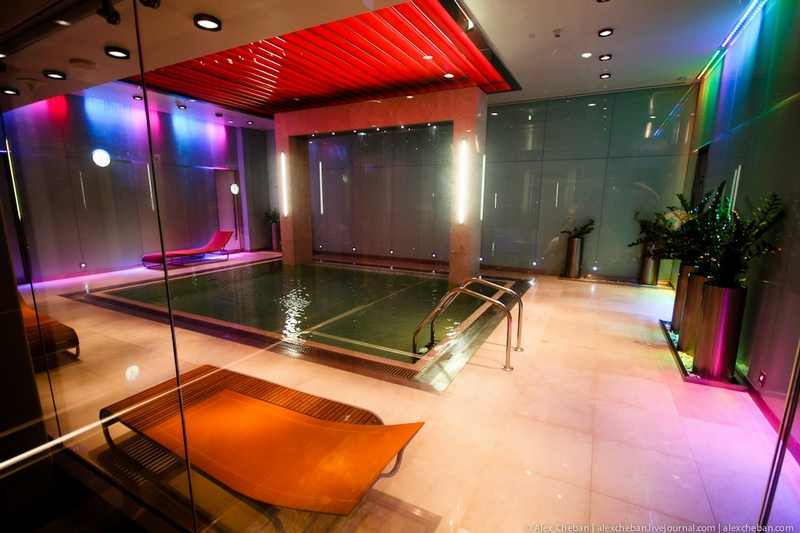
And don't forget to have a rest in a swimming pool or a hot tub.
Fitness centers are in the middle part of Terminal 1 and 3 and related
to the hotel. Anyone can enjoy their services. Spending 1 hour in a
swimming pool will cost you 12$.
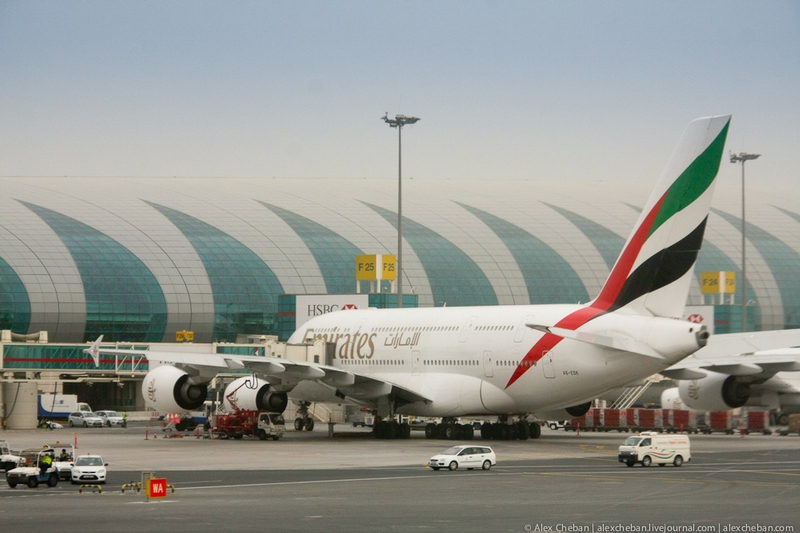
It is planned to launch Concourse 3 at the end of 2011. Its maximum capacity will be estimated at 15 million passengers a year.
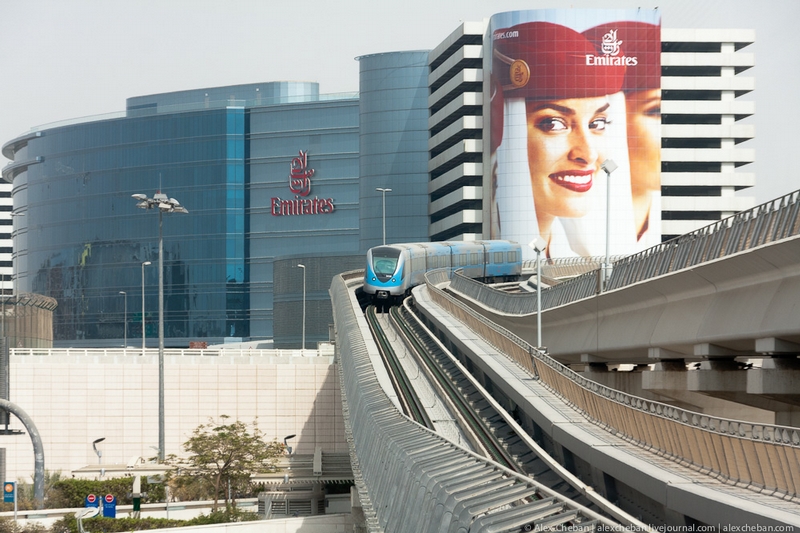
The airport is connected with the city by means of a subway.
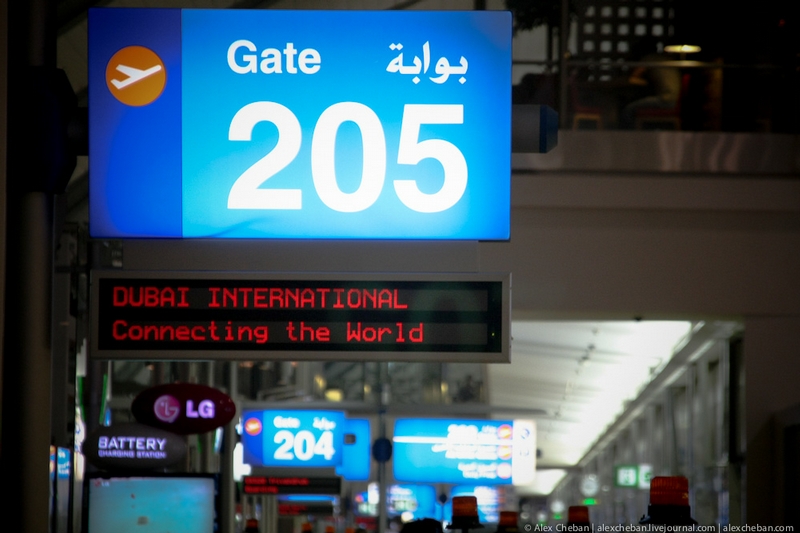
Dubai is an intermediate area for import and export of flowers. The
products need special conditions of storage and distribution. First
stage of Flower Center creation was completed in 2004 and cost 50
million US dollars. It is planned to spend 2 more years on its
construction. The temperature inside any room will constitute +2-+4
degrees Celsius.
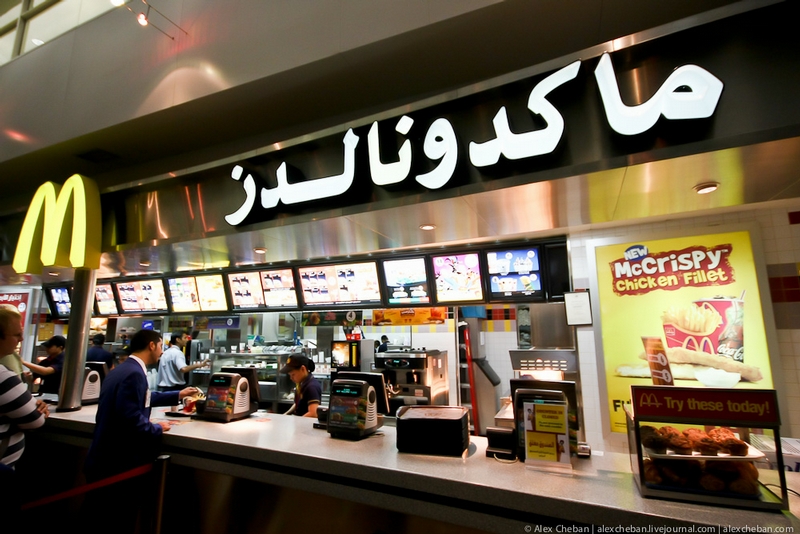
Globalization in practice.
via alexcheban

0 comments:
Post a Comment